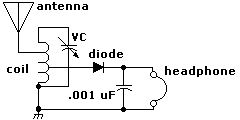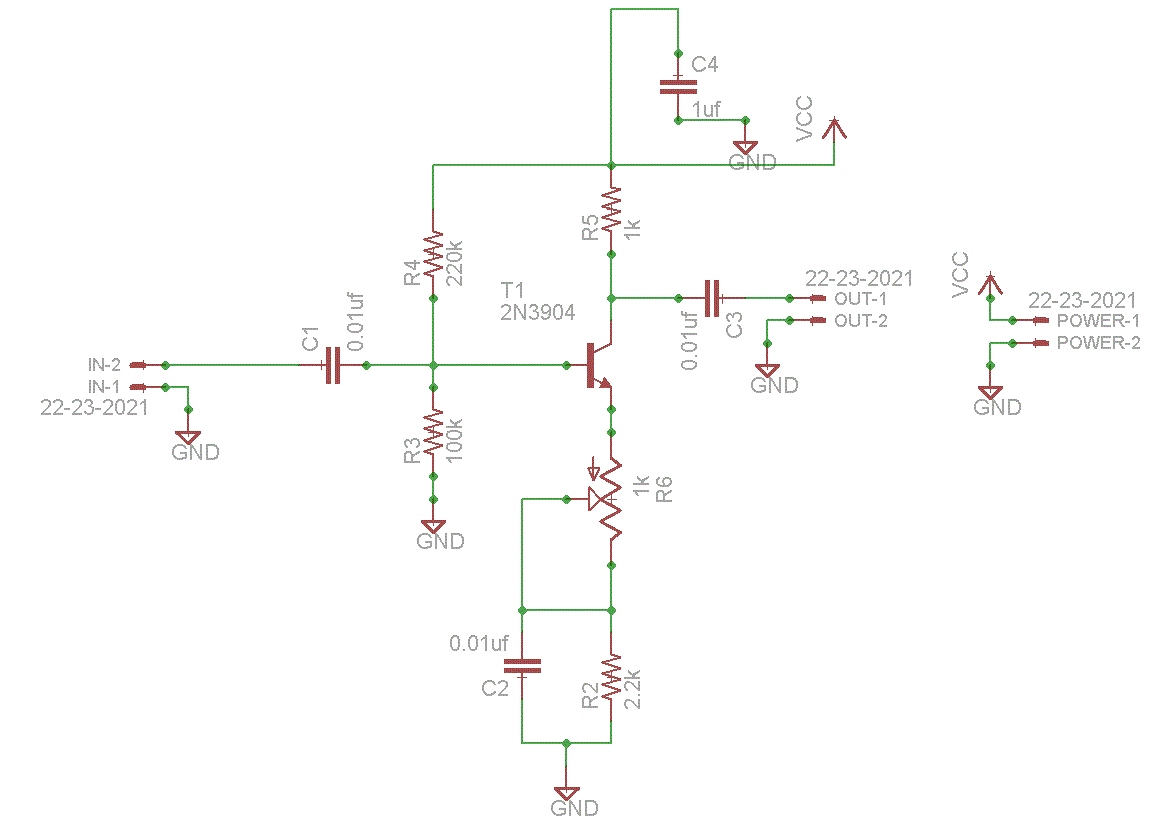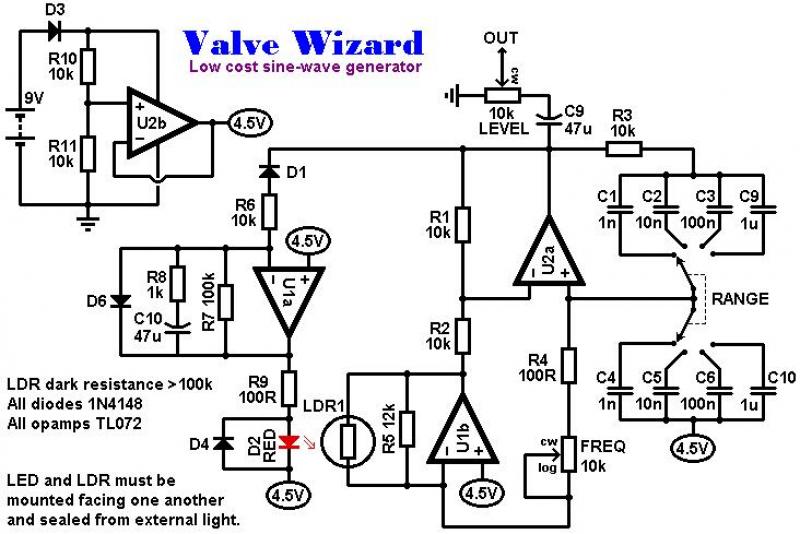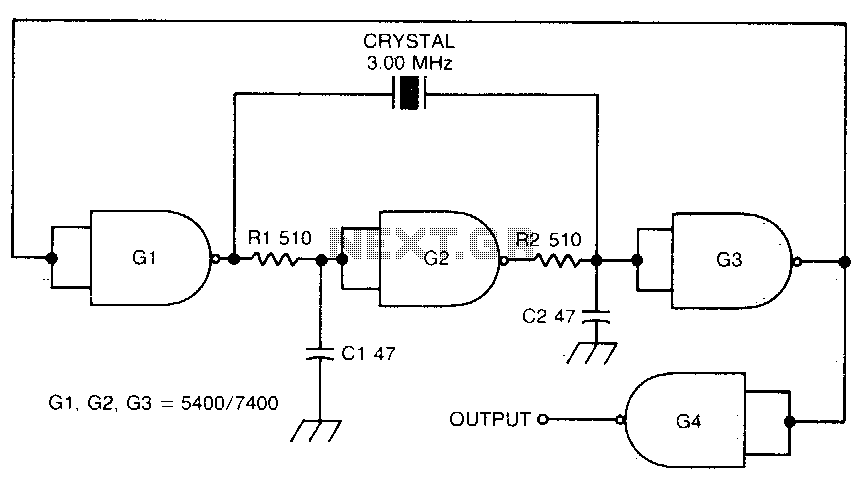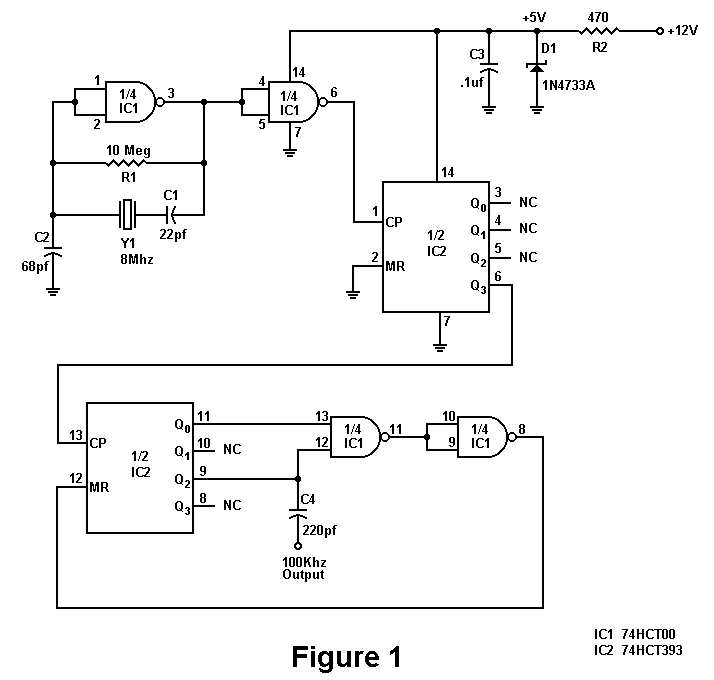
100Khz crystal calibrator
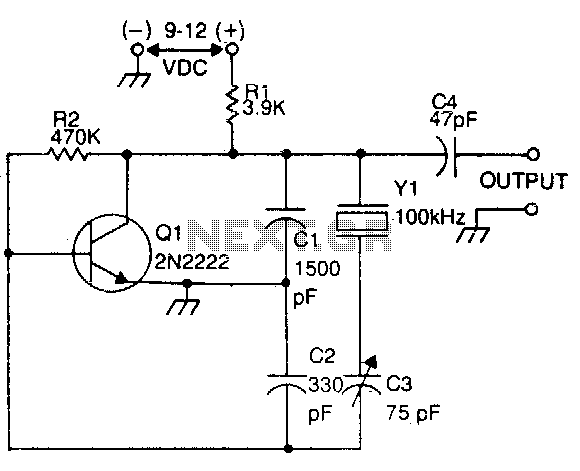
This circuit is commonly utilized by amateur radio operators, shortwave listeners, and various users of shortwave receivers to calibrate the dial pointer. The oscillator functions at a fundamental frequency of 100 kHz, with its harmonics employed to identify specific points on the shortwave dial, given that the output of the calibrator is connected to the antenna circuit of the receiver. Additionally, a crystal shunts the feedback voltage divider and is connected in series with a variable capacitor (C3), which is used to adjust the actual operating frequency of the calibrator.
The circuit design features a 100 kHz oscillator, which serves as the primary frequency source for calibration. This oscillator typically employs a crystal to ensure stability and precision in the output frequency. The harmonics generated by the oscillator play a crucial role in the calibration process, allowing the operator to pinpoint various frequencies across the shortwave band effectively.
In the circuit, the crystal oscillator provides a stable frequency reference. The feedback voltage divider is integral to maintaining the oscillation, and the crystal's shunt configuration helps to optimize the feedback loop for consistent performance. The inclusion of the variable capacitor (C3) allows for fine-tuning of the oscillator's frequency, enabling the user to adjust the output to match specific calibration needs. This adjustability is particularly important in applications involving diverse shortwave frequencies, as it enhances the versatility of the calibrator.
For optimal performance, the output of the calibrator is coupled to the antenna circuit of the shortwave receiver. This coupling can be achieved through various means, such as a direct connection or via a matching network, depending on the specific requirements of the receiver and the desired calibration accuracy. The careful design of the circuit ensures minimal signal loss and distortion, thereby facilitating accurate frequency identification on the shortwave dial.
Overall, this calibration circuit is a valuable tool for operators seeking to enhance their shortwave listening experience by ensuring that their receivers are accurately tuned to the desired frequencies. The combination of a stable oscillator, adjustable components, and effective coupling techniques contributes to the reliability and functionality of the circuit in practical applications.This circuit is often used by amateur radio operations, shortwave listeners, and other operators of shortwave receivers to calibrate the dial pointer. The oscillator operates at a fundamental frequency of 100 kHz, and the harmonics are used to locate points on the shortwave dial, provided that the output of the calibrator is coupled to the antenna circuit of the receiver
The crystal shunts the feedback voltage divider, and is in series with a variable capacitor (C3) that is used to set the actual operating frequency of the calibrator.
The circuit design features a 100 kHz oscillator, which serves as the primary frequency source for calibration. This oscillator typically employs a crystal to ensure stability and precision in the output frequency. The harmonics generated by the oscillator play a crucial role in the calibration process, allowing the operator to pinpoint various frequencies across the shortwave band effectively.
In the circuit, the crystal oscillator provides a stable frequency reference. The feedback voltage divider is integral to maintaining the oscillation, and the crystal's shunt configuration helps to optimize the feedback loop for consistent performance. The inclusion of the variable capacitor (C3) allows for fine-tuning of the oscillator's frequency, enabling the user to adjust the output to match specific calibration needs. This adjustability is particularly important in applications involving diverse shortwave frequencies, as it enhances the versatility of the calibrator.
For optimal performance, the output of the calibrator is coupled to the antenna circuit of the shortwave receiver. This coupling can be achieved through various means, such as a direct connection or via a matching network, depending on the specific requirements of the receiver and the desired calibration accuracy. The careful design of the circuit ensures minimal signal loss and distortion, thereby facilitating accurate frequency identification on the shortwave dial.
Overall, this calibration circuit is a valuable tool for operators seeking to enhance their shortwave listening experience by ensuring that their receivers are accurately tuned to the desired frequencies. The combination of a stable oscillator, adjustable components, and effective coupling techniques contributes to the reliability and functionality of the circuit in practical applications.This circuit is often used by amateur radio operations, shortwave listeners, and other operators of shortwave receivers to calibrate the dial pointer. The oscillator operates at a fundamental frequency of 100 kHz, and the harmonics are used to locate points on the shortwave dial, provided that the output of the calibrator is coupled to the antenna circuit of the receiver
The crystal shunts the feedback voltage divider, and is in series with a variable capacitor (C3) that is used to set the actual operating frequency of the calibrator.
